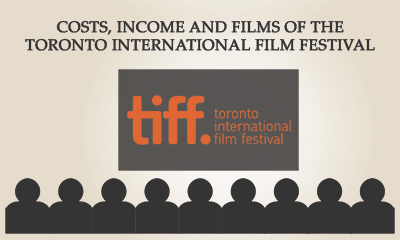 I am currently at the Toronto International Film Festival (TIFF), experiencing Canadian hospitality, international films and British jetlag.
I am currently at the Toronto International Film Festival (TIFF), experiencing Canadian hospitality, international films and British jetlag.
TIFF is a lot larger than I suspect most people realise. The annual festival is huge, attracting over 5,000 industry professionals and selling 530,000 tickets in 2015, but this is just one aspect of TIFF. Throughout the rest of the year, they run screenings, talks, exhibitions, training, industry and charitable events.
In order to get a better idea of the scale of TIFF, I combed through Annual Reports, audited accounts and other public documents to look at TIFF’s costs and income. To give you a sense of scale, at the end of 2015 they had $9.1 million in cash in the bank and overall had assets worth over $109 million.
Note: All amounts in today’s article are in Canadian dollars. At the time of writing, one Canadian dollar is worth $0.77 US dollars, €0.69 Euros or £0.58 British pounds.
Income of the Toronto International Film Festival
Toronto relies more heavily on ticket sales to the public than most other festivals. In my study of 523 film festivals, I found that festivals earn an average of just 23% of their income from cinema box office and in my breakdown of the costs and income of the Raindance Film Festival earlier this year we saw that ticket sales only account for 20% of their income. By contrast, 33% of TIFF’s annual income comes via the box office.
This is down to the fact that TIFF sells more tickets than any film festival, with 530,000 tickets sold in 2015.
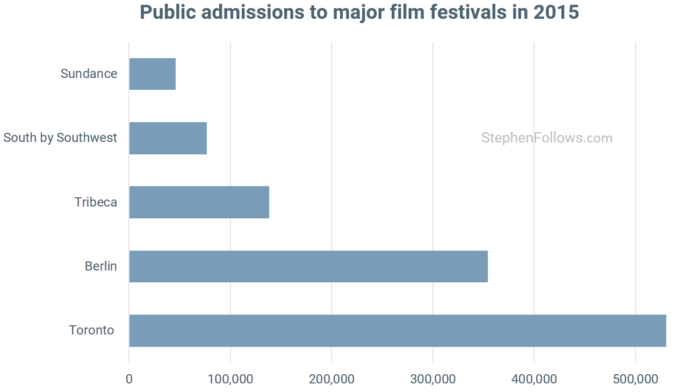
Other earned revenue includes their membership scheme ($1.5m in 2015), merchandise, food and drinks ($1.2m), and interest from investments in property and mutual funds ($320k).
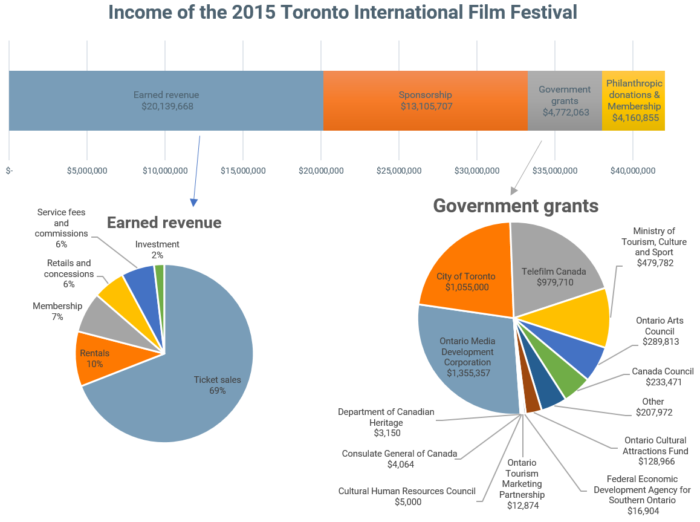
TIFF has grown considerably in recent years, with its 2015 income being more than double that of 2008. That said, their government grants have not kept pace, with such income accounting for 25% of the total in 2008 but decreasing to 11% in 2015.
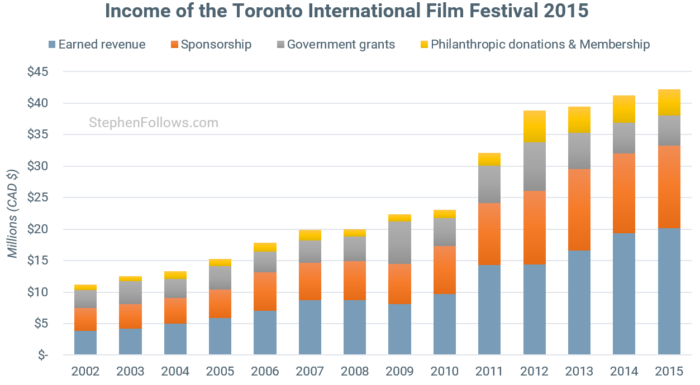
Costs of the Toronto International Film Festival
TIFF is a huge operation, and the annual cost of all of their operations came to over $42 million last year. The biggest cost is programming, which includes artistic development and programming, learning programmes and their collections.
As we saw above, just over half of TIFF’s income comes from sponsorship, government grants and philanthropic donations. In 2015, gaining and maintaining this income cost the festival $3,423,679, i.e. 16% of the amount raised.
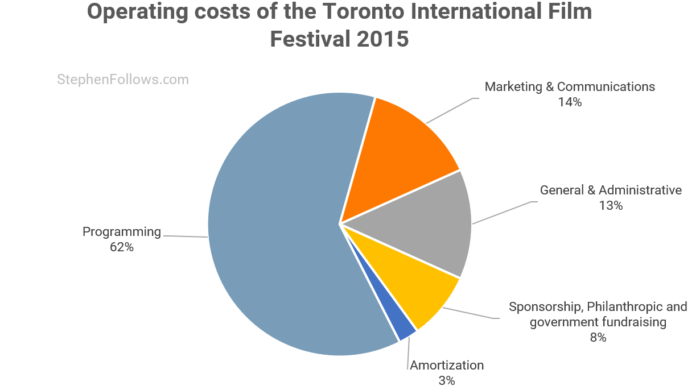
By comparing the annual income and expenditure, we are able to see if they made an excess or a loss. In recent years they have ended the year up, but in the late 2000s they operated at a loss due to the cost of building their new Lightbox building.
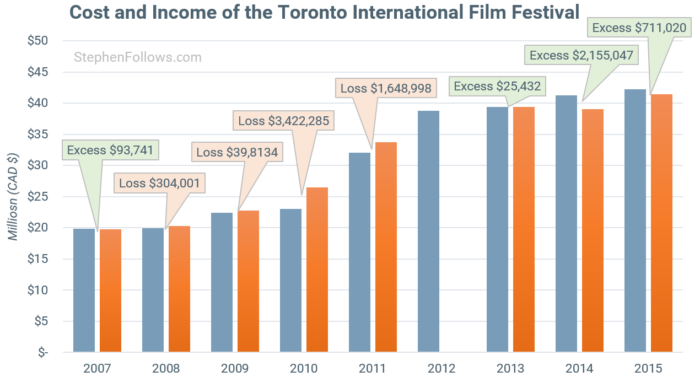
Note: Sadly the 2012 Annual Report is no longer online and cannot be achieved via the Internet Archive as it was originally presented as an interactive Flash file. This means I couldn’t locate the operating costs for 2012, and the festival has yet to get back to me with a figure.
Films at the Toronto International Film Festival
The number of films submitted to TIFF has risen sharply in recent years. In 2013 they received 4,892 but just three years later that had grown to 6,933. In 2016, almost a fifth of submissions came from Canadian filmmakers.
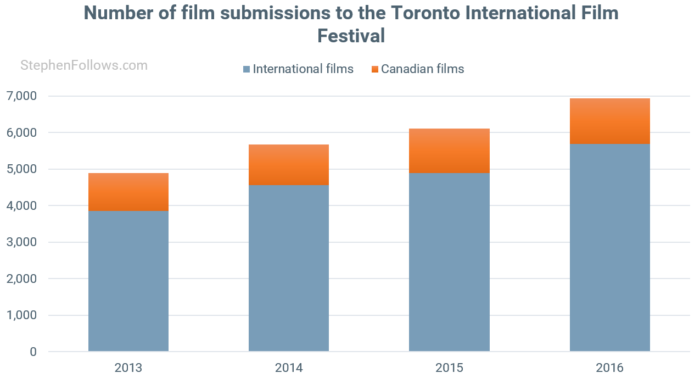
TIFF is mostly a festival of premieres with almost half of all screened films in 2016 being a World premiere. A further 33% of films were screening at TIFF as their North American premiere and 10% an International premiere (i.e. only having been screened previously in America). Only 10% of films did not offer TIFF some sort of premiere status.
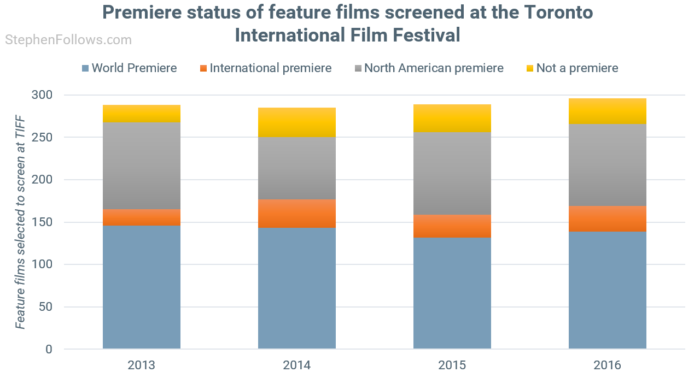
TIFF has a reputation for screening high-quality films, which is reflected in the number of Golden Globe, SAG and Oscar nominations TIFF films receive. The timing of the festival helps, as films screened in TIFF will normally be released to the public towards the end of the year, just as the Oscars race hots up. That said, TIFF overlaps dates with Venice Film Festival, which has far fewer films that go on to be nominated.
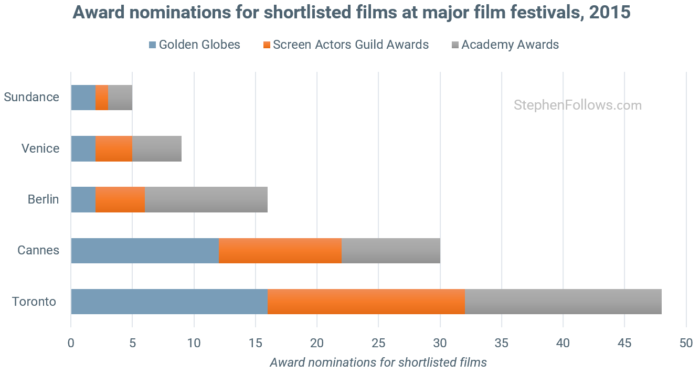
Epilogue
I’ve hugely enjoyed my time at TIFF. The movies, the staff, the city – everything combines to create the perfect festival atmosphere and experience. If you’ve not been, then I strongly suggest you try attending next year.

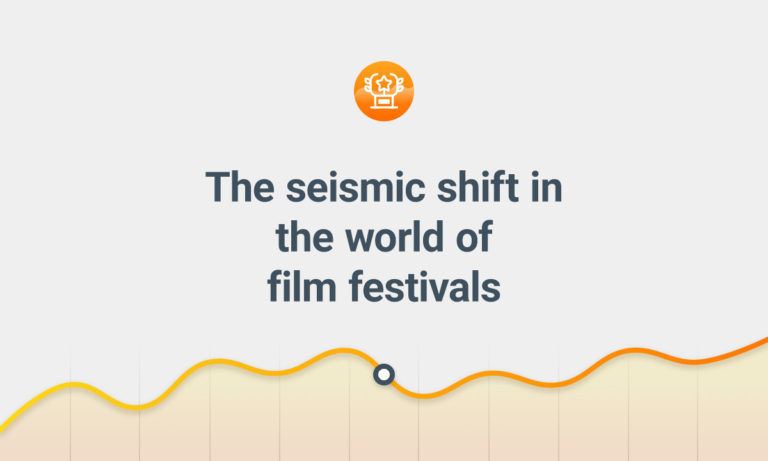
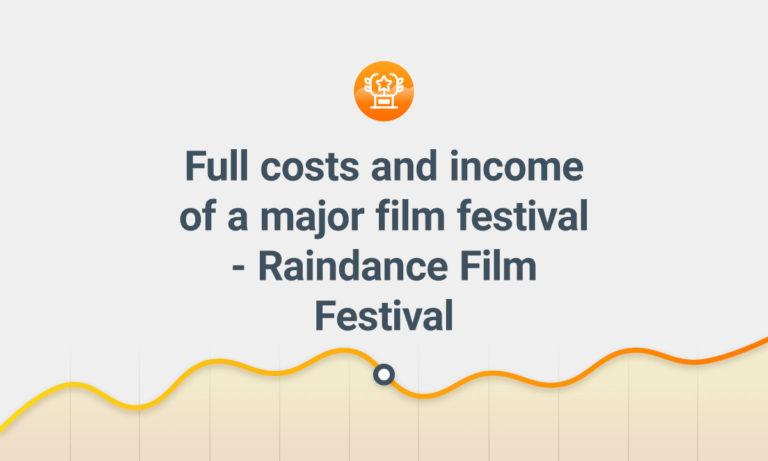


Comments
Hi,
I wasn’t able to find any information on tickets sales in 2015 or 2016. How do the numbers add up? Does the 530.000 include the tickets sales year round for events they offer throughout the year, or does it only refer to the tickets sold for festival screenings?
Could you tell me a source? I would like to track the tickets sales throughout the years and their development.
Thanks!
Hello from Istanbul,
I am deeply impressed with your reports. They all are interesting and informative.
In the junk of internet there are millions of cinema-bloggers fighting about if this film is better than the other film or they are coming up with non-sense ‘all time best 100 blah blah blah films’ lists, your work is shining like a diamong among theirs.
Please keep up the good work.
Wonderful report! Is there any chance you still have the annual reports for 2004 and 2012, and could give me access to them? They are no longer anywhere to be found online.
Hi
A very concise and informative article. We have been selected to world premiere at TIFF19 and have been scouring the internet for past week. Your article is the best so far!!.
Hi,
It would be really interesting to know the specific statistics for audiences and candidates – how many are POC, LGBTQ+, under 30 etc…?
I have scoured the internet to find this information and found nothing – I thought if anyone can, it’s you.